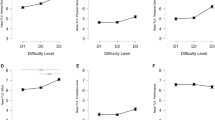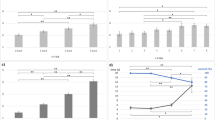Abstract
Workload is an effective analytical attribute that helps to evaluate a pilot’s performance while operating an aircraft yet is an under-researched construct in aviation. In the foundational study, we sought to utilize electroencephalogram (EEG) and flight simulator performance data to explore the relationship between mental and physical workload of pilots as they completed routine flight activities. The study focused on two specific metrics- the EEG response (sensory inhibition, and attention) and a physical workload metric derived from flight control activity and the deviation from reference pitch and bank attitudes. Five pilots participated in the study, each completing five sessions in an Advanced Aviation Training Device (AATD). The results were inconclusive but seemed to indicate trends that were reasonably linked to pilot’s skill profile. A more complete and nuanced understanding of how mental and physical workloads relate to pilot activity may be determined from additional research with a larger sample size and broader range of performance metrics and assessment strategies.
Access this chapter
Tax calculation will be finalised at checkout
Purchases are for personal use only
Similar content being viewed by others
References
Belt, S., Gururajan, S., Wu, X.: Evaluation of workload and performance during primary flight training with motion cueing seat in an advanced aviation training device. SAE Int. J. Aerosp 13(1), 91–106 (2020). https://doi.org/10.4271/01-13-01-0006
Bollock, N.K., O'Brien, M.P., Gai, Y., Belt, S.M.: Evidence-based training and adaptive control: exploring the cognitive and neural processes and the interface between the pilot and flight control systems (work in progress). In: ASEE Annual Conference & Exposition, Tampa, FL (2019). https://www.asee.org/public/conferences/140/papers/27612/view
Choi, Y., et al.: Hypovigilance detection for UCAV operators based on a hidden Markov model. Comput. Math. Methods Med. 2014 (2014). https://doi.org/10.1155/2014/567645
Clayton, M.S., Yeung, N., Cohen Kadosh, R.: The roles of cortical oscillations in sustained attention. Trends. Cogn. Sci. 19, 188-195 (2015). https://doi.org/10.1016/j.tics.2015.02.004
Dahlstrom, N., Nahlinder, S.: Mental workload in aircraft and simulator during basic civil aviation training. Int. J. Aviat. Psychol. 19(4), 309 (2009). https://doi.org/10.1080/10508410903187547
Dunn, O.J.: Multiple comparisons using rank sums. Technometrics 6, 241–252 (1964)
Laerd Statistics: Kruskal-Wallis H test using SPSS Statistics. Statistical tutorials and software guides (2015). https://statistics.laerd.com/
Mazaheri, A., van Schouwenburg, M.R., Dimitrijevic, A., Denys, D., Cools, R., Jensen, O.: Region-specific modulations in oscillatory alpha activity serve to facilitate processing in the visual and auditory modalities. Neuroimage 87, 356–362 (2014). https://doi.org/10.1016/j.neuroimage.2013.10.052
Sagoo, G.K., et al.: Evaluation of a fault-tolerant scheme in a six-degree-of-freedom motion flight simulator. J. Aerosp. Comput. Inf. Commun. 7, 47–67 (2010). https://doi.org/10.2514/1.42299
Wilson, G.F.: An analysis of mental workload in pilots during flight using multiple psychophysiological measures. Int. J. Aviat. Psychol. 12, 3–18 (2002). https://doi.org/10.1207/S15327108IJAP1201_2
Young, M.S., Brookhuis, K.A., Wickens, C.D., Hancock, P.A.: State of science: mental workload in ergonomics. Ergonomics 58, 1–17 (2015). https://doi.org/10.1080/00140139.2014.956151
Young, M.S., Stanton, N.A.: Malleable attentional resources theory: a new explanation for the effects of mental underload on performance. Hum. Factors 44(3), 365 (2002). https://doi.org/10.1518/0018720024497709
Zhao, C., Zhao, M., Liu, J., Zheng, C.: Electroencephalogram and electrocardiograph assessment of mental fatigue in a driving simulator. Accid Anal Prev 45, 83–90 (2012). https://doi.org/10.1016/j.aap.2011.11.019
Author information
Authors and Affiliations
Corresponding author
Editor information
Editors and Affiliations
Rights and permissions
Copyright information
© 2021 The Author(s), under exclusive license to Springer Nature Switzerland AG
About this paper
Cite this paper
Belt, S., Gai, Y., Gururajan, S., Tamilselvan, G., Bollock, N.K. (2021). Exploring Pilot Workload During Professional Pilot Primary Training and Development: A Feasibility Study. In: Nunes, I.L. (eds) Advances in Human Factors and System Interactions. AHFE 2021. Lecture Notes in Networks and Systems, vol 265. Springer, Cham. https://doi.org/10.1007/978-3-030-79816-1_24
Download citation
DOI: https://doi.org/10.1007/978-3-030-79816-1_24
Published:
Publisher Name: Springer, Cham
Print ISBN: 978-3-030-79815-4
Online ISBN: 978-3-030-79816-1
eBook Packages: EngineeringEngineering (R0)




